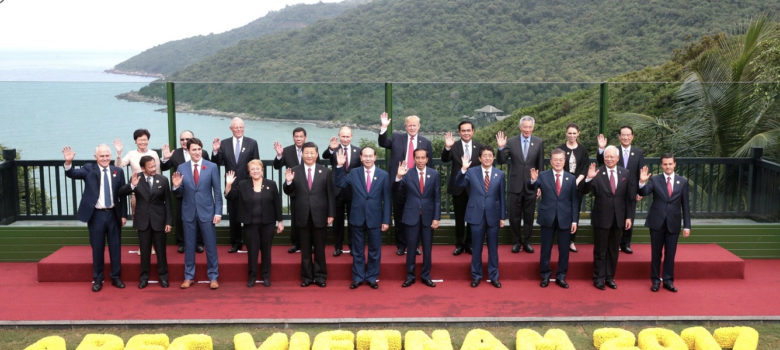The end-game in trade negotiations always generates more than its fair share of drama and last week’s effort to re-work the Trans Pacific Partnership without the United States was no different. Canada was squarely in the spotlight with Prime Minister Justin Trudeau a no-show at a ministerial meeting that was attributed to a scheduling error, but had the hallmarks of gamesmanship designed to demonstrate a willingness to walk away from the deal.
I posted over the weekend on some of the key IP provisions that have been suspended and published an op-ed in the Globe and Mail that argues that the result was a major win for Canada as the government leveraged its position as the second largest economy left in the TPP to extract significant concessions on intellectual property, culture, and the auto sector. Indeed, despite pressure to cave on key demands from the Japanese and Australian governments, Canada stood its ground and is helping to craft a trade deal that better reflects a balanced approach on challenging policy issues.
In advance of meetings last week in Vietnam, Mr. Trudeau had signalled that Canada would not be rushed into a deal simply for the sake of an agreement. With pressure on multiple trade fronts and misgivings about the terms of a trade deal that was concluded by the Conservatives weeks before the 2015 federal election, a few tweaks might not be enough to salvage the flawed TPP. The decision to go-slow and seek further negotiations may draw the ire of a few governments anxious to conclude the TPP, but it made both strategic and policy sense.
From a strategic perspective, Canada was a late entrant to the TPP negotiations, arriving well after the basic framework had been established and several of the chapters concluded. In fact, the TPP only became a trade priority after the Harper government identified the risks of remaining on the outside of a deal that included the U.S. The decision to participate was primarily defensive with some studies projecting only marginal economic gains.
With the U.S. now out of the TPP, Canada’s primary strategic objective was gone. That left a deal that offered some benefits for increased trade with Japan, but little else given that Canada already has free trade agreements with several other TPP countries such as Mexico, Chile, and Peru.
Further, the TPP never fully reflected some of the Liberal government’s trade priorities, including adequately addressing labour regulation and indigenous rights. Addressing those issues to advance the goal of a “progressive” agreement would require far more than some modest drafting changes.
The contentious NAFTA renegotiation has upended Canada’s trade priorities since the U.S. remains our dominant trading partner. The overlap between NAFTA and the TPP represents a particularly thorny issue. For example, auto sector provisions have emerged as some of the most challenging of the NAFTA talks, threatening to dramatically change longstanding rule of origin regulations that have served as the basis for a critical North America-wide industry. To hamstring the Canadian NAFTA position on the automotive sector in order to reach a TPP agreement would have swapped short-term gain for long-term pain. As a result, Canada successfully argued that the issue should remain subject to further negotiation.
The trouble with the TPP11 extended beyond strategic shortcomings as the substantive provisions in several areas were widely viewed as coming at a significant domestic cost. This is particularly true for the intellectual property chapter, where the original agreement included patent provisions that would likely increase the cost of pharmaceuticals and copyright rules that would lock down content for decades through the extension of the term of copyright beyond the standard established at international law.
The IP chapter largely reflected U.S. demands and with its exit from the TPP, an overhaul that more closely aligns the agreement to international standards was needed. Canada succeeded on that front too with an agreement to suspend most of the controversial IP provisions including those involving copyright term, patent extension, biologics protection, Internet provider liability, and digital lock rules.
The TPP was also an outlier on cultural policy, departing from the longstanding Canadian approach by omitting a full cultural exception and creating unprecedented restrictions on policies to support the creation of Canadian content. The absence of robust cultural protections in the TPP had been a simmering issue for months. With the issue becoming increasingly sensitive in light of the recent release of a digital cultural policy, acquiescing to a trade agreement that raised alarm bells within the cultural community would have bad policy and bad politics, leaving Canada to successfully argue for further discussions on a cultural exemption.
Global Affairs Minister Chrystia Freeland and International Trade Minister François-Philippe Champagne inherited a trade policy that seemed to prioritize any deal over a good deal. Agreement on the TPP11 (now rebranded the Comprehensive and Progressive Agreement for Trans Pacific Partnership) remains a possibility, but standing firm on Canadian interests with a willingness to walk away rightly recognized that no deal is better than a bad one.








Pingback: The Fight for Fair Copyright Returns: Canadian Government Launches Major Copyright Review - Michael Geist
Pingback: Canada Successfully Stands Up For Balanced IP and Canadian Culture in TPP Deal - Michael Geist